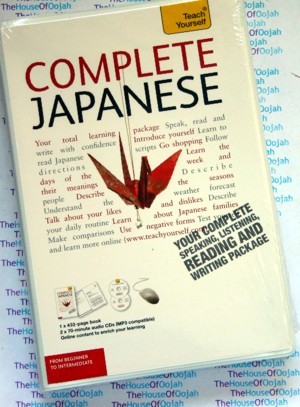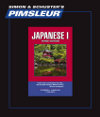Teach Yourself Japanese - 2CDs and Illustrated Book - AudioBook CD

Teach Yourself Complete Japanese2 Audio CDs and Illustrated Course BookGet other Japanese Learning AudioBooks click here |
 |
Teach Yourself Complete Japanese - Book and 2 Audio CDs432 page Book and 2CDs Are you looking for a complete course in Japanese which takes you effortlessly from beginner to confident speaker? Whether you are starting from scratch, or are just out of practice, Complete Japanese will guarantee success! Now fully updated to make your language learning experience fun and interactive. You can still rely on the benefits of a top language teacher and our years of teaching experience, but now with added learning features within the course and online. The course is structured in thematic units and the emphasis is placed on communication, so that you effortlessly progress from introducing yourself and dealing with everyday situations, to using the phone and talking about work. By the end of this course, you will be at Level B2 of the Common European Framework for Languages: Can interact with a degree of fluency and spontaneity that makes regular interaction with native speakers quite possible without strain for either party. Learn effortlessly with a new easy-to-read page design and interactive features: NOT GOT MUCH TIME? AUTHOR INSIGHTS GRAMMAR TIPS USEFUL VOCABULARY DIALOGUES PRONUNCIATION TEST YOURSELF EXTEND YOUR KNOWLEDGE TRY THIS Brand new edition - more lively and up to date .
New audio recording with top Japanese voice-overs.
All three Japanese scripts taught...
...but student can learn spoken language using only roman script.
Cultural information in every unit Table of Contents: About the Author About the Japanese LanguageJapanese is a language spoken by over 130 million people, in Japan and in Japanese emigrant communities around the world. It is an agglutinative language and is distinguished by a complex system of honorifics reflecting the hierarchical nature of Japanese society, with verb forms and particular vocabulary to indicate the relative status of speaker and listener. The sound inventory of Japanese is relatively small, and has a lexically distinct pitch-accent system. Japanese vocabulary has been heavily influenced by loans from other languages. A vast number of words were borrowed from Chinese, or created from Chinese models, over a period of at least 1,500 years. Since the late 19th century, Japanese has borrowed a considerable number of words from Indo-European languages, primarily English. Because of the special trade relationship between Japan and first Portugal in the 16th century, and then mainly Holland in the 17th century, Portuguese and Dutch have also been influential. German linguist, Johann Joseph Hoffmann noticed the systematic relationship between Japanese, Mongolian and Manchu language and wrote a book in the 19th century.The Japanese language is written with a combination of three different types of scripts: Chinese characters called kanji, and two syllabic scripts made up of modified Chinese characters, hiragana and katakana . The Latin alphabet, rōmaji , is also often used in modern Japanese, especially for company names and logos, advertising, and when inputting Japanese into a computer. Western style Arabic numerals are generally used for numbers, but traditional Sino-Japanese numerals are also commonplace. Like Latin-derived words in English, kango words typically are perceived as somewhat formal or academic compared to equivalent Yamato words. Indeed, it is generally fair to say that an English word derived from Latin/French roots typically corresponds to a Sino-Japanese word in Japanese, whereas a simpler Anglo-Saxon word would best be translated by a Yamato equivalent.A much smaller number of words has been borrowed from Korean and Ainu. Japan has also borrowed a number of words from other languages, particularly ones of European extraction, which are called gairaigo. This began with borrowings from Portuguese in the 16th century, followed by borrowing from Dutch during Japan's long isolation of the Edo period. With the Meiji Restoration and the reopening of Japan in the 19th century, borrowing occurred from German, French and English. Currently, words of English origin are the most commonly borrowed. In the Meiji era, the Japanese also coined many neologisms using Chinese roots and morphology to translate Western concepts. The Chinese and Koreans imported many of these pseudo-Chinese words into Chinese, Korean, and Vietnamese via their kanji in the late 19th and early 20th centuries. For example, seiji ("politics"), and kagaku ("chemistry") are words derived from Chinese roots that were first created and used by the Japanese, and only later borrowed into Chinese and other East Asian languages. As a result, Japanese, Chinese, Korean, and Vietnamese share a large common corpus of vocabulary in the same way a large number of Greek- and Latin-derived words are shared among modern European languages, although many academic words formed from such roots were certainly coined by native speakers of other languages, such as English. |
Teach Yourself Complete Japanese - Book and 2 Audio CDs |

 0 Items (Empty)
0 Items (Empty)




